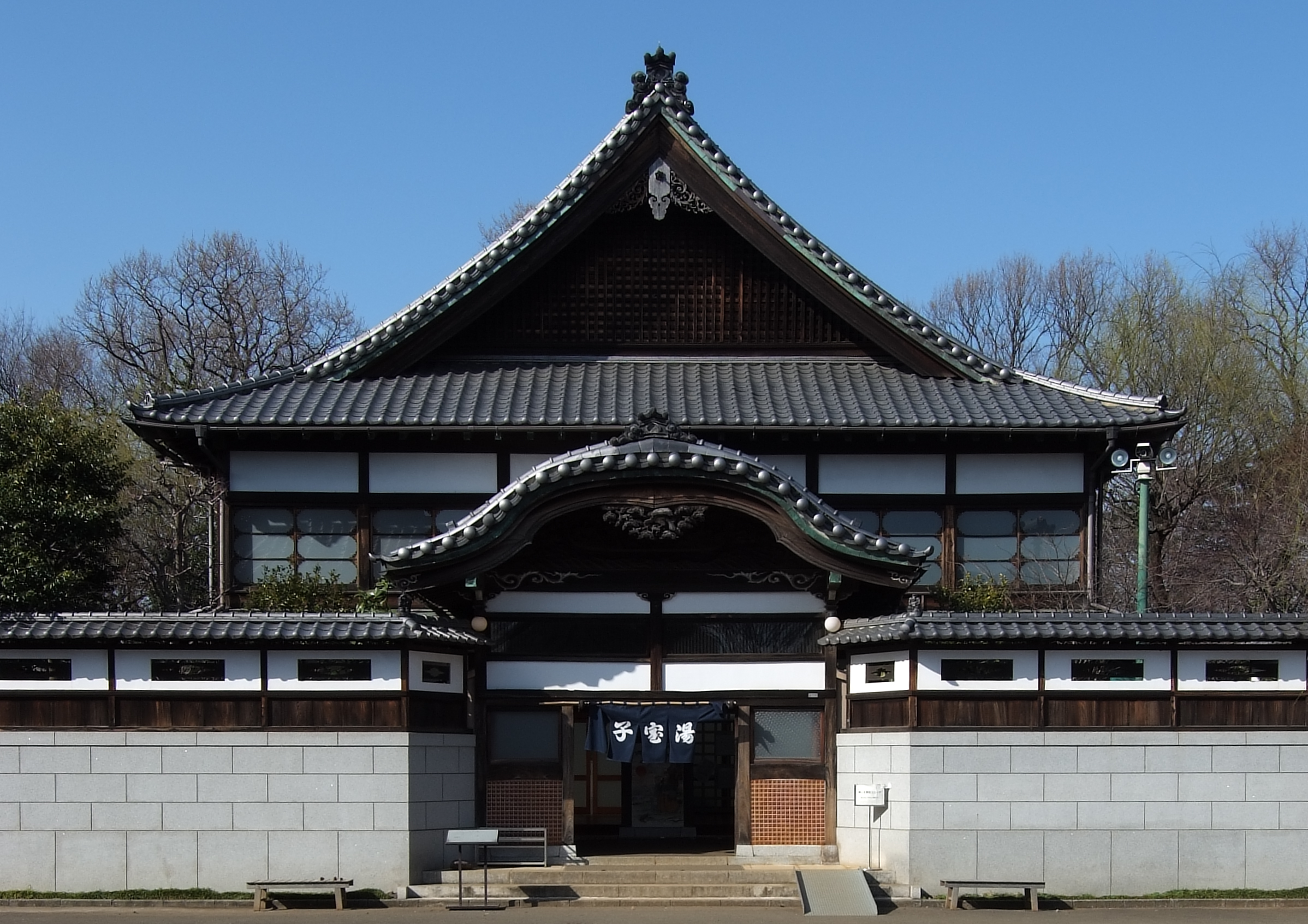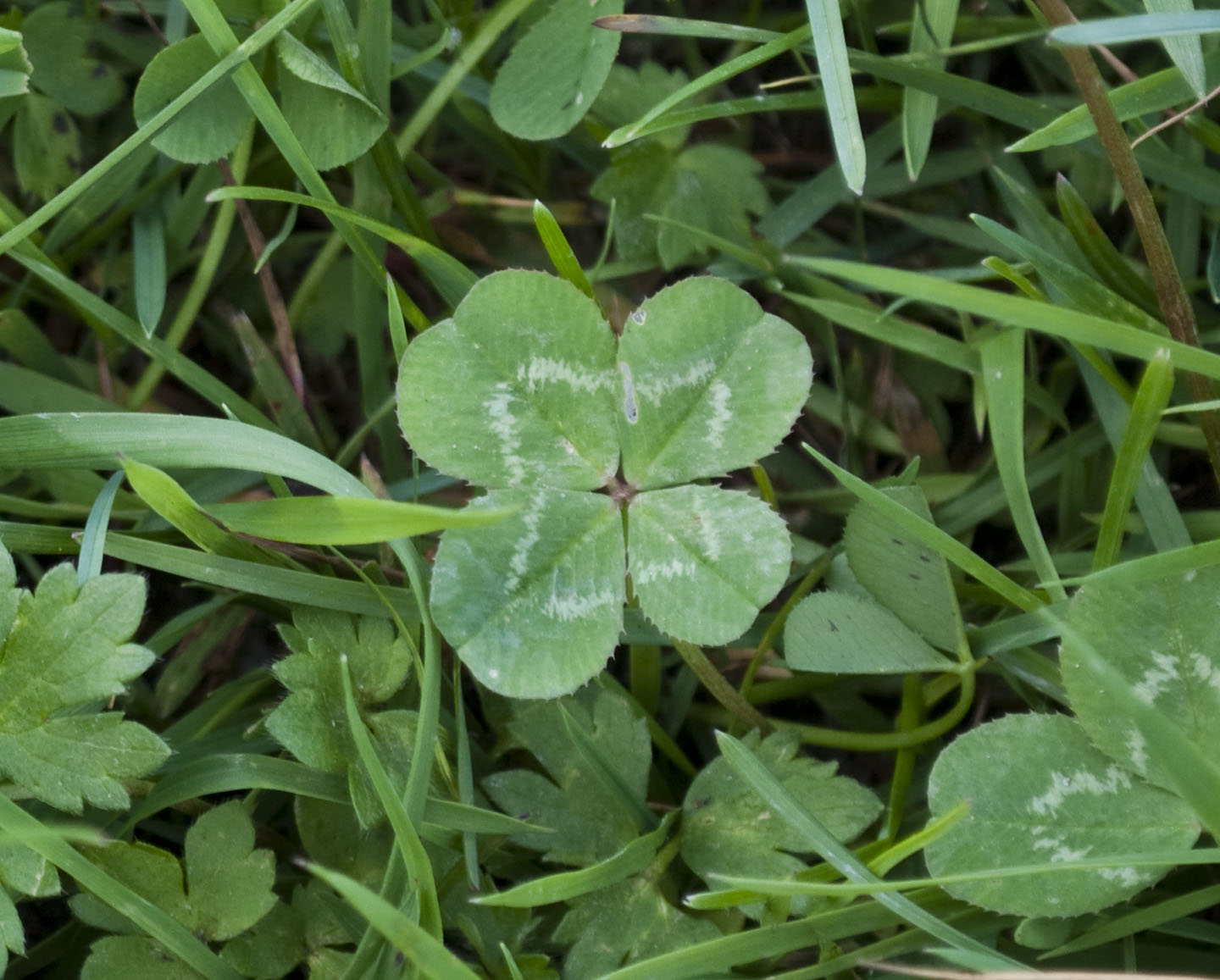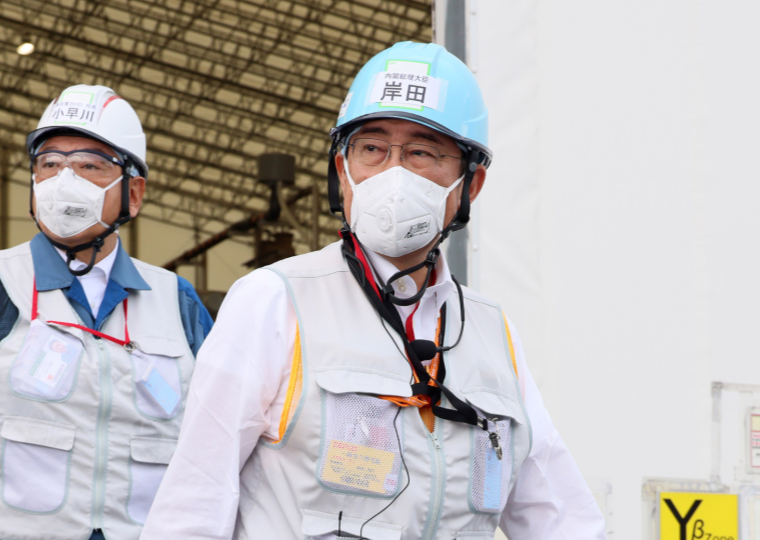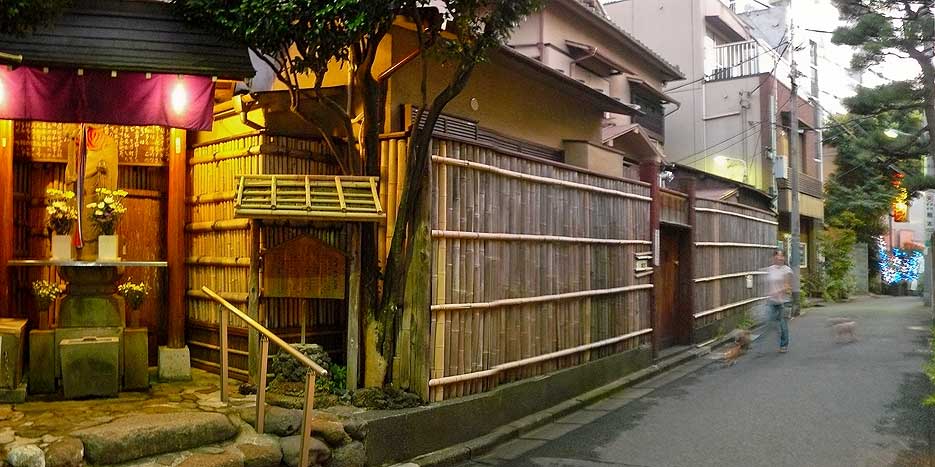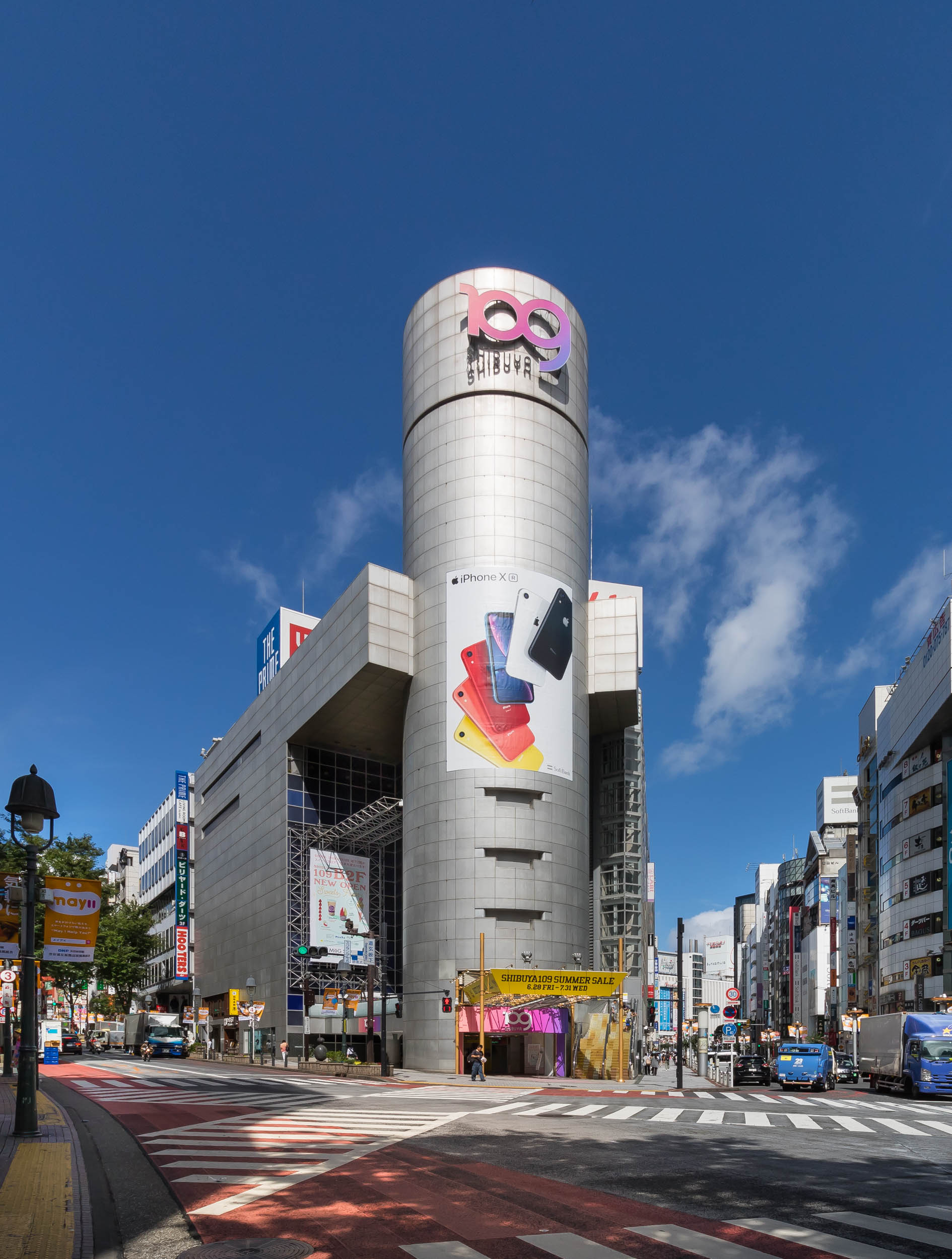|
Japanese Wordplay
Japanese wordplay relies on the nuances of the Japanese language and Japanese script for humorous effect, functioning somewhat like a cross between a pun and a spoonerism. Double entendres have a rich history in Japanese entertainment (such as in kakekotoba) due to the language's large number of homographs (different meanings for a given spelling) and homophones (different meanings for a given pronunciation). Kakekotoba or "pivot words" are an early form of Japanese wordplay used in waka poetry, wherein some words represent two homonyms. The presence of multiple meanings within these words allowed poets to impart more meaning into fewer words. Goroawase is an especially common form of Japanese wordplay, wherein homophonous words are associated with a given series of letters, numbers or symbols, in order to associate a new meaning with that series. The new words can be used to express a superstition about certain letters or numbers. More commonly, however, ''goroawase'' is ... [...More Info...] [...Related Items...] OR: [Wikipedia] [Google] [Baidu] |
Japanese Language
is the principal language of the Japonic languages, Japonic language family spoken by the Japanese people. It has around 123 million speakers, primarily in Japan, the only country where it is the national language, and within the Japanese diaspora worldwide. The Japonic family also includes the Ryukyuan languages and the variously classified Hachijō language. There have been many Classification of the Japonic languages, attempts to group the Japonic languages with other families such as Ainu languages, Ainu, Austronesian languages, Austronesian, Koreanic languages, Koreanic, and the now discredited Altaic languages, Altaic, but none of these proposals have gained any widespread acceptance. Little is known of the language's prehistory, or when it first appeared in Japan. Chinese documents from the 3rd century AD recorded a few Japanese words, but substantial Old Japanese texts did not appear until the 8th century. From the Heian period (794–1185), extensive waves of Sino-Ja ... [...More Info...] [...Related Items...] OR: [Wikipedia] [Google] [Baidu] |
Sentō
is a type of Japanese communal bathhouse where customers pay for entrance. Traditionally these bathhouses have been quite utilitarian, with a tall barrier separating the sexes within one large room, a minimum of lined-up faucets on both sides, and a single large bath for the already washed bathers to sit in among others. Since the second half of the 20th century, these communal bathhouses have been decreasing in numbers as more and more Japanese residences now have baths. Some Japanese find social importance in going to public baths, out of the theory that physical proximity/intimacy brings emotional intimacy, which is termed '' skinship'' in pseudo-English Japanese. Others go to a ''sentō'' because they live in a small housing facility without a private bath or to enjoy bathing in a spacious room and to relax in saunas or jet baths that often accompany new or renovated sentōs. Another type of Japanese public bath is ''onsen'', which uses hot water from a natural hot spring ... [...More Info...] [...Related Items...] OR: [Wikipedia] [Google] [Baidu] |
Sasaki Kojirō
was a Japanese swordsman who may have lived during the Azuchi–Momoyama and early Edo periods and is known primarily for the story of his duel with Miyamoto Musashi in 1612, where Sasaki was killed. Although suffering from defeat as well as death at the hands of Musashi, he is a revered and respected warrior in Japanese history and culture. Later Miyamoto proclaimed that Sasaki Kojirō was the strongest opponent he faced in his life. In popular culture Like most of the well-known samurai of his era, Sasaki was depicted in several places: *He plays a central role in the novel, Musashi, by Eiji Yoshikawa. His life is described in a parallel storyline. *In various film adaptations of his story or that of Miyamoto Musashi. For example, in ''Zoku Miyamoto Musashi: Ichijōji no kettō'' (''Samurai 2: Duel at Ichijoji Temple''; 1955; Director / Screenplay: Hiroshi Inagaki). *In the manga '' Vagabond'', he plays a central role alongside Musashi and is shown here as deaf. * ... [...More Info...] [...Related Items...] OR: [Wikipedia] [Google] [Baidu] |
Four-leaf Clover
The four-leaf clover is a rare mutation of the common three-leaf clover that has four Leaflet (botany), leaflets instead of three. According to traditional sayings, such clovers bring good luck, a belief that dates back to at least the 17th century. The term ''four-leaf'' is Botany, botanically a misnomer, as Clover, cloverplants have multiple leaves (multiple clovers), each consisting of a varying number of Leaflet (botany), leaflets, typically three. Occurrence A 2017 survey of approximately 5.7 million clovers in six European countries found the frequency of 4-leaf clovers to be around 5000 to 1 (one 4-leaf clover for every 5076 normal 3-leaf clovers), almost twice the commonly stated probability of 10,000 to 1. According to this survey, the frequency of a 5-leaf clover is 24,390 to 1, and that of a 6-leaf clover is 312,500 to 1. According to Guinness World Records, the clover with the most leaflets ever found had 63 of them, and was discovered by Yoshiharu Watanabe of Nas ... [...More Info...] [...Related Items...] OR: [Wikipedia] [Google] [Baidu] |
Fumio Kishida
Fumio Kishida (born 29 July 1957) is a Japanese politician who served as Prime Minister of Japan and President of the Liberal Democratic Party ( LDP) from 2021 to 2024. He has been a member of the House of Representatives in the National Diet since 1993. Kishida previously served as Minister for Foreign Affairs from 2012 to 2017 and as acting Minister of Defense in 2017. From 2017 to 2020, he also chaired the LDP Policy Research Council. Born into a political family, Kishida spent part of his childhood in the United States, where he attended elementary school in New York City. After beginning his career in finance, Kishida entered politics and was elected to the House of Representatives at the 1993 general election as a member of the LDP. Kishida was appointed to Minister of State for Special Missions in the premiership of Shinzo Abe and Yasuo Fukuda from 2007 to 2008, and was appointed Minister for Foreign Affairs in 2012 after Abe regained the premiership following the 2 ... [...More Info...] [...Related Items...] OR: [Wikipedia] [Google] [Baidu] |
Tokyu Corporation
The , a contraction of and formerly until 2 September 2019, is a Japanese ''keiretsu'' or conglomerate headquartered in Shibuya, Tokyo. While a multinational corporation, its main operation is , a wholly-owned subsidiary operating railways in the Greater Tokyo Area. History The oldest predecessor of company was the , opened in 1908. The railway's operations were converted into a kabushiki gaisha (company) in 1910. Keita Gotō, now a notable Japanese industrialist, was appointed as the CEO in 1920 and he began a major expansion program. The most important predecessor was first registered on September 2, 1922, as the and is related to the construction of Den-en-chōfu. It was originally founded by the developers of Den-en-chōfu). It was acquired by the Musashi Electric Railway in 1924, shortly before Musashi was renamed into the , also known as the Toyoko, in the same year. After Musashi/Toyoko's acquisition, the Meguro-Kamata Electric Railway initially operated as ... [...More Info...] [...Related Items...] OR: [Wikipedia] [Google] [Baidu] |
Tokyo
Tokyo, officially the Tokyo Metropolis, is the capital of Japan, capital and List of cities in Japan, most populous city in Japan. With a population of over 14 million in the city proper in 2023, it is List of largest cities, one of the most populous urban areas in the world. The Greater Tokyo Area, which includes Tokyo and parts of six neighboring Prefectures of Japan, prefectures, is the most populous metropolitan area in the world, with 41 million residents . Lying at the head of Tokyo Bay, Tokyo is part of the Kantō region, on the central coast of Honshu, Japan's largest island. It is Japan's economic center and the seat of the Government of Japan, Japanese government and the Emperor of Japan. The Tokyo Metropolitan Government administers Tokyo's central Special wards of Tokyo, 23 special wards, which formerly made up Tokyo City; various commuter towns and suburbs in Western Tokyo, its western area; and two outlying island chains, the Tokyo Islands. Although most of the w ... [...More Info...] [...Related Items...] OR: [Wikipedia] [Google] [Baidu] |
Shibuya
is a Special wards of Tokyo, special ward in Tokyo, Japan. A major commercial center, Shibuya houses one of the busiest railway stations in the world, Shibuya Station. As of January 1, 2024, Shibuya Ward has an estimated population of 230,609 in 142,443 households and a population density of . The total area is . Notable neighborhoods and districts of Shibuya include Harajuku, Ebisu, Shibuya, Ebisu, Omotesandō, Yoyogi and Sendagaya. Shibuya came into the possession of the Shibuya clan in the early 1160s, after which the area was named. The branch of the clan that ruled this area was defeated by the Later Hōjō clan on January 13, 1524, during the Sengoku period, and the area then came under their control. During the Edo period, Shibuya, particularly Maruyamachō, Shibuya, Maruyamachō on Dōgenzaka, prospered as a town on Oyama Road (present-day Japan National Route 246, Route 246), and in the Meiji era, as a Hanamachi. Shibuya emerged as a railway terminus during the expan ... [...More Info...] [...Related Items...] OR: [Wikipedia] [Google] [Baidu] |
109 (department Store)
is a department store in Shibuya, Tokyo, Japan. The store is operated by SHIBUYA109 Entertainment Corporation, a subsidiary of the Tokyu Group. History and description The building, located just across the street from Shibuya Station, opened in April 1979. The architect was Minoru Takeyama. Tokyu, the building's operator, designed the building as a "Fashion Community" containing small retail stores targeting the early-30s female consumer. Tokyu intended the store to compete with Seibu Department Stores, which was making inroads into the Shibuya area.Bull, Brett, "Decades as Tokyo's tower of girl power", ''Japan Times'', January 22, 2009, p. 17. The name of the building, ''109'', is a form of word play ( goroawase, specifically numerical substitution) and is taken from the Japanese characters ''tō'' (meaning 10) and ''kyū'' (9) as in '' Tōkyū''. The numbers 10 and 9 also signified the operating hours, which was 10 a.m. to 9 p.m. The interior of the building is desi ... [...More Info...] [...Related Items...] OR: [Wikipedia] [Google] [Baidu] |
Wordfilter
A wordfilter (sometimes referred to as just "filter" or "censor") is a script typically used on Internet forums or chat rooms that automatically scans users' posts or comments as they are submitted and automatically changes or censors particular words or phrases. The most basic wordfilters search only for specific strings of letters, and remove or overwrite them regardless of their context. More advanced wordfilters make some exceptions for context (such as filtering "butt" but not "butter"), and the most advanced wordfilters may use regular expressions. Functions Wordfilters can serve any of a number of functions. Removal of vulgar language A ''swear filter'', also known as a ''profanity filter'' or ''language filter'' is a software subsystem which modifies text to remove words deemed offensive by the administrator or community of an online forum. Swear filters are common in custom-programmed chat rooms and online video games, primarily MMORPGs. This is not to be confuse ... [...More Info...] [...Related Items...] OR: [Wikipedia] [Google] [Baidu] |
Yo-yo
A yo-yo (also spelled yoyo) is a toy consisting of an axle connected to two disks, and a string looped around the axle, similar to a spool. It is an ancient toy with proof of existence since 440 BC. The yo-yo was also called a bandalore in the 17th century. It is played by holding the free end of the string known as the ''handle'' (by inserting one fingerusually the middle or ring fingerinto a slip knot), allowing gravity (or the force of a throw and gravity) to spin the yo-yo and unwind the string (similar to how a pullstring works). The player then allows the yo-yo to wind itself back to the player's hand, exploiting its spin (and the associated rotational energy). This is often called "yo-yoing" or "playing yo-yo". In the simplest play, the string is intended to be wound on the spool by hand; the yo-yo is thrown downward, hits the end of the string then winds up the string toward the hand, and finally the yo-yo is grabbed, ready to be thrown again. One of the most basic ... [...More Info...] [...Related Items...] OR: [Wikipedia] [Google] [Baidu] |
